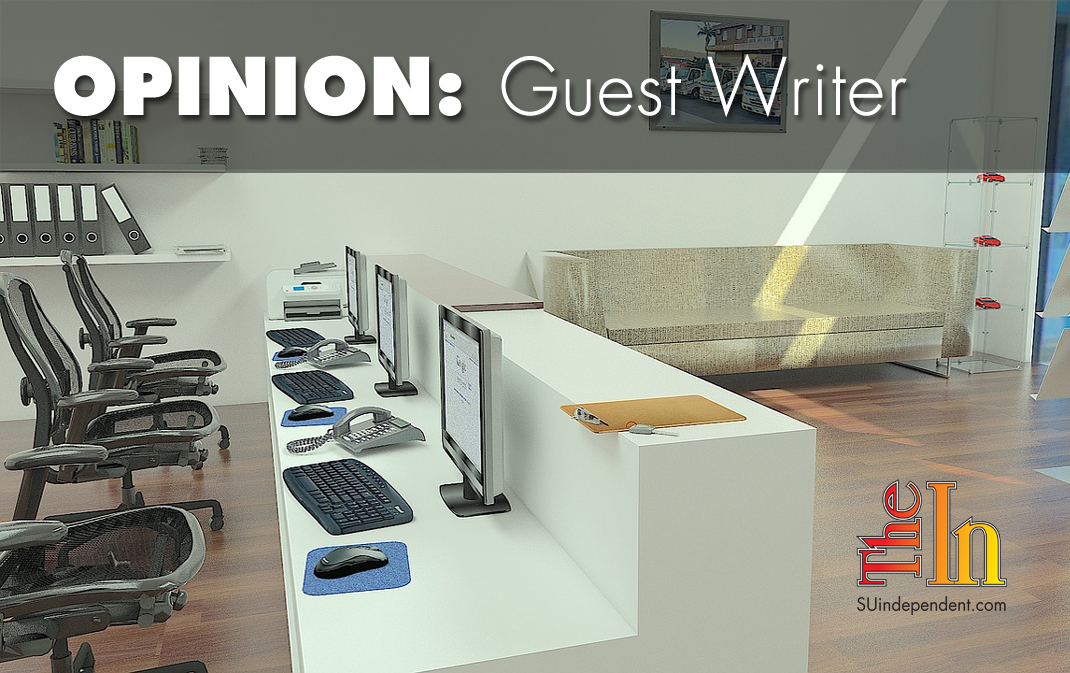
How to make open offices work for everyone
By Dick Resch
Whoever thought walls and doors could go out of style? Apparently, that’s what has happened at offices nationwide. Seven in 10 American offices now have an open office floor plan rather than cubicles or private rooms.
The open office aims to boost creativity, productivity, and collaboration by making it easy for employees to interact. But that hasn’t been the case for everybody. A study published this summer by researchers at Harvard Business School found that in-person interactions actually dropped more than 70 percent after workers moved from a cubicle to an open office workspace. Employee productivity also declined.
Open offices and isolating cube farms aren’t our only choices. Borrowing the best from both design approaches can give workers what they’re really after: control and ownership of their workspace. When people decide for themselves where and how they work, they’re happier and more productive. That pays dividends for employees and employers alike.
The mystique surrounding open offices is due in part to their popularity in Silicon Valley. But tech companies are not alone in trading walls for side-by-side work. Citigroup recently converted its headquarters to an open office floor plan. Former New York mayor Michael Bloomberg preferred a wall-less “bullpen” setup during his tenure in City Hall.
Evangelists for open-plan workspaces often cite the serendipitous interactions they encourage. As Citigroup CEO Michael Corbat told the Wall Street Journal, “You’re going to be forced to bump into people. … I want people interacting around our business and ideas.”
But all that mingling doesn’t help everyone. A 2011 analysis of over 100 studies found that open office plans can elevate workers’ stress levels, undermine motivation, and make it harder to concentrate.
To some, open offices can be stressful, noisy, and distracting. It’s no wonder people don’t thrive in them when that’s the case.
It’s far better for employers to empower their workers to choose how and where they work. Someone might start their morning in a private work booth to finish a project on a tight deadline and then move to a lounge in the afternoon to brainstorm with colleagues or recharge.
Some businesses are already embracing this flexible approach. Last summer, financial services firm Northwestern Mutual opened its new Milwaukee headquarters. Before designing the 32-story office tower, the company surveyed its employees on how they wanted workspaces to look, feel, and function.
People wanted workspaces they could control. That led to workstations where employees can sit or stand. They can raise privacy screens to shut out distractions. And they can quickly reconfigure their workspaces with mobile tables, stools, and whiteboards for impromptu meetings or brainstorming sessions.
Research backs up this flexible approach. A University of Exeter study found that empowering employees to control the design of their workspace increases productivity by as much as 32 percent.
When people can take ownership over how they work, they care more about that work. Employees who can move to a variety of workspaces are 1.3 times more likely to be engaged than other employees.
Nobody wants to work in complete isolation or utter chaos. Fortunately, they don’t have to choose between the two. Employers looking to maximize happiness and productivity must give workers control over their space. Research shows that they know full well what to do with it.
Dick Resch is chief executive officer of KI Furniture.
The viewpoints expressed above are those of the author and do not necessarily reflect those of The Independent.
How to submit an article, guest opinion piece, or letter to the editor to The Independent
Do you have something to say? Want your voice to be heard by thousands of readers? Send The Independent your letter to the editor or guest opinion piece. All submissions will be considered for publication by our editorial staff. If your letter or editorial is accepted, it will run on suindependent.com, and we’ll promote it through all of our social media channels. We may even decide to include it in our monthly print edition. Just follow our simple submission guidelines and make your voice heard:
—Submissions should be between 300 and 1,500 words.
—Submissions must be sent to editor@infowest.com as a .doc, .docx, .txt, or .rtf file.
—The subject line of the email containing your submission should read “Letter to the editor.”
—Attach your name to both the email and the document file (we don’t run anonymous letters).
—If you have a photo or image you’d like us to use and it’s in .jpg format, at least 1200 X 754 pixels large, and your intellectual property (you own the copyright), feel free to attach it as well, though we reserve the right to choose a different image.
—If you are on Twitter and would like a shout-out when your piece or letter is published, include that in your correspondence and we’ll give you a mention at the time of publication.
Articles related to “How to make open offices work for everyone”
Letter to the Editor: Be more considerate of younger employees



